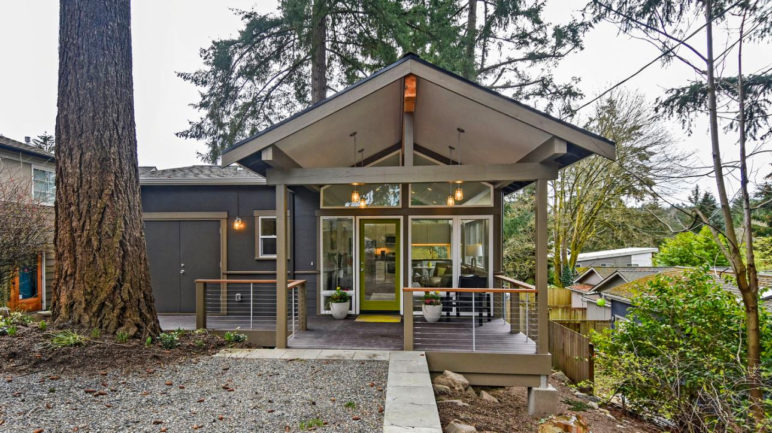Homeowners should be empowered to decide what’s best for their home and property. Unclear or restrictive tree policies can get in the way of homeowners taking preventative measures to protect their homes or using their property more efficiently. With balanced tree policies, homeowners have clear paths to maintain their trees or make desired changes to their property.
Homeowners have a right to minimize safety risks
In some cases, such as during a storm or as trees age, they can pose a threat to the safety of homeowners and their property. Restrictive or unclear tree policies can limit homeowners’ ability to trim branches or cut down dying trees, avoiding costly damage. While not entirely preventable, damage and safety risks from trees can be minimized with straightforward processes and requirements.
For example, in Austin, TX, residents faced challenges protecting their homes from future storms because of unclear city tree policies. Old growth trees were protected from removal, but there was no guidance or process for trimming branches to protect power lines and property. The answer was still unclear after months of correspondence with arborists and city officials. The situation leaves homeowners to deal with the damages alone and without guidance to prevent future damage or worse, to avoid potentially disastrous consequences.
Homeowners should be able to make positive changes to their properties
Likewise, homeowners should have the right to make changes to their property. This includes renovations that add value to properties, such as expanding to accommodate a growing family or making energy-efficient upgrades. Other homeowners want to make bigger changes by building adjacent homes, like ADUs or backyard cottages.
In Vermont, building an ADU was not only accessible through city incentives and streamlined processes, but it also allowed one homeowner to create a safer home for their aging parents. These homes can provide much needed housing for people who otherwise could not afford to live there, and the rental income can help pay for building costs and future maintenance and repairs.
Balanced tree policies are flexible
Unfortunately, restrictive tree policies can prevent property owners from breaking ground on a new home or modifying an existing home if trees need to be removed and replaced. When there is no flexibility or clear guidance on replacing trees on the property or elsewhere, restrictive policies prevent homeowners from creating much needed and more affordable homes. The ability to add more housing choices in existing neighborhoods makes our communities more diverse and vibrant, and help more people access the benefits of walkability.
Balanced tree policies can help empower homeowners to make decisions affecting their property, whether it’s trimming tree branches, removing dead or sick trees, renovating, or building a home. Learn how balanced tree policies can help ensure our communities are healthy and thriving.

